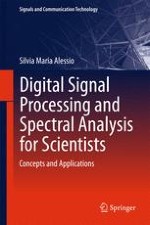2016 | OriginalPaper | Buchkapitel
9. Statistical Approach to Signal Analysis
verfasst von : Silvia Maria Alessio
Erschienen in: Digital Signal Processing and Spectral Analysis for Scientists
Aktivieren Sie unsere intelligente Suche, um passende Fachinhalte oder Patente zu finden.
Wählen Sie Textabschnitte aus um mit Künstlicher Intelligenz passenden Patente zu finden. powered by
Markieren Sie Textabschnitte, um KI-gestützt weitere passende Inhalte zu finden. powered by
